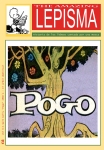
Well, we've all seen the ever changing Google logo on special days of the year.
The latest dynamic dynamo is the new Saks Fifth Avenue identity.
A 1973 Saks signature logo was revived — and refined — by the Pentagram design group, then sliced into 64 components that are arranged in different configurations on bags and boxes. "Fragmenting the logo gave it energy and bravura," said Michael Bierut, the Pentagram partner who led the Saks project. "And now we can create numerous permutations of the logo."
Dynamic identities fly in the face of the conventional wisdom that consistency is essential to an effective corporate identity. The more we see the same corporate symbol — or so the consistency camp argues — the more likely we'll be to recognize and remember it. Companies adhered to this throughout the 20th century; and the designers of some of the most successful identities, such as Jan Tschichold at Penguin Books in the late 1940s, and Paul Rand as a consultant to IBM from the 1950s to the early 1990s, were renowned for their rigor.
Tschichold specified how every element of design at Penguin should be executed — down to the spacing of the letters in its books — in the Penguin Composition Rules. Rand did the same at IBM in a series of documents with self-explanatory titles, such as IBM Logo: Use and Abuse. Their objective was to protect the purity of their carefully planned design systems from being botched by dodgy printers and overzealous local managers. Both designers occasionally broke their own rules, but resisted the right of others to do so. As Tschichold wrote: "It is the master who establishes the rules... and is permitted to break the rules, even his own."
Read it all about it: International Herald Tribune.
And here's the word directly from Pentagram.
That's Right,
HMK
















































No comments:
Post a Comment